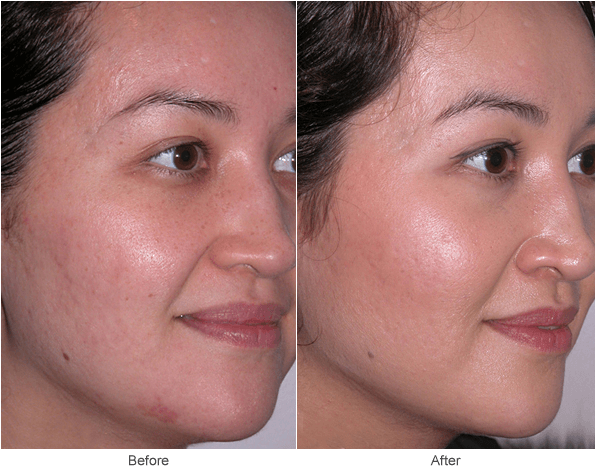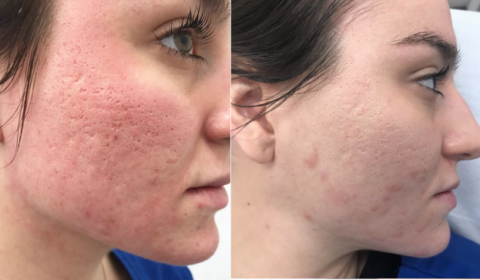Understanding the Various Skin Conditions and Effective Treatment Options for Acne Scars
Acne scars represent a complicated interplay of skin conditions that considerably effect individuals' self-confidence and general skin health and wellness. Comprehending the unique types of acne marks-- hypertrophic and atrophic-- along with their underlying reasons, is crucial for determining effective treatment techniques. Different restorative choices exist, varying from sophisticated dermatological procedures to all-natural solutions. The efficacy of these therapies commonly pivots on individualized evaluations by qualified specialists. As we discover the landscape of acne mark management, it becomes evident that the trip towards more clear skin might include greater than just topical remedies.
Kinds of Acne Scars
The 2 key categories of acne scars are hypertrophic and atrophic marks. These scars are additional identified right into three subtypes: ice pick marks, which are slim and deep; boxcar scars, which are larger and have distinct sides; and rolling marks, which create a wave-like appearance due to unequal skin structure.
In comparison, hypertrophic marks result from an overproduction of collagen throughout the recovery procedure, leading to raised areas on the skin. These scars are commonly solid and can vary in color, often appearing red or darker than the bordering skin.

Reasons For Acne Scarring
Scarring takes place as an outcome of the body's natural healing feedback to swelling and injury triggered by acne sores. When acne kinds, it sets off an inflammatory response, bring about the launch of various cytokines and development aspects that promote recovery. Nevertheless, this procedure can often result in too much tissue formation or insufficient repair work, causing scars.
The primary reasons for acne scarring include the extent of the acne itself, duration of the sores, and private skin kinds. Serious inflammatory acne, such as blemishes and cysts, is more most likely to result in scarring as a result of deeper cells damage. In addition, incorrect handling of acne sores, such as pressing or picking, can aggravate tissue injury and swelling, enhancing the chance of scarring.
Hereditary proneness also plays a substantial duty; individuals with a family members background of scarring go to a greater risk. Furthermore, skin type and shade can affect scar development, as darker skin tones may experience post-inflammatory hyperpigmentation, while lighter skin might develop atrophic scars.

Treatment Choices for Scarring
Effective therapy alternatives for acne scarring differ relying on the kind and extent of the marks. Normally classified into atrophic, hypertrophic, and keloid scars, these conditions call for customized strategies for ideal results.
For atrophic scars, which are characterized by a loss of cells, therapies such as chemical peels, microdermabrasion, and laser treatment are typically employed. These methods advertise skin revival and promote collagen production, thereby boosting skin appearance. Subcision, a minimally invasive procedure, can additionally be reliable by damaging up fibrous bands beneath the skin.
Keloid and hypertrophic marks can be much more challenging to deal with. Choices include sites corticosteroid shots to lower inflammation and flatten the marks. skin rejuvenation treatments. In some instances, cryotherapy or laser therapy may be recommended to lessen their appearance
Surgical choices are available for severe scarring, where excision or skin grafting might be required. It's crucial for individuals to seek advice from a dermatologist to assess their specific mark kind and review the most suitable therapy plan. Combining several therapies commonly yields the very best results, making certain that each individual's unique skin disease is addressed successfully.
Natural Home Remedy and All-natural Solutions
All-natural services and natural remedy can provide an obtainable approach for people looking for to improve the appearance of acne marks. Various components located in the home kitchen have shown possible benefits in improving skin texture and promoting recovery.
One popular remedy is aloe vera, understood for its anti-inflammatory and relaxing properties. Applying fresh aloe vera gel directly onto the scars can aid boost skin hydration and decrease inflammation. In a similar way, honey has all-natural antibacterial and moisturizing high qualities that can help in mark recovery. It can be made use of as a mask, left on for half an hour prior to washing off.
An additional reliable alternative is lemon juice, which works as an all-natural exfoliant and can lighten hyperpigmentation. click It must be utilized carefully, as it might trigger photosensitivity. Oatmeal masks are also advantageous; their gentle exfoliation can aid get rid of dead skin cells while comforting irritability.
Necessary oils, such as tea tree oil and lavender oil, can better support scar healing as a result of their antimicrobial properties. It is crucial to execute a spot test before using any type of treatment to ensure there are no adverse responses. These natural solutions can be a corresponding technique in the journey to diminish acne marks.
Stopping Future Scarring
Embracing a proactive technique to skincare can significantly minimize the danger of creating future acne marks. One of the vital methods is to handle acne effectively as it emerges (acne and acne scars treatment). This entails utilizing non-comedogenic skincare items and medicines suggested by dermatologists that target acne without aggravating the skin. Regular cleansing, peeling, and hydration can help keep skin health and stop clogged pores.
Additionally, preventing the lure to press or select acne lesions is essential, as this can cause swelling and subsequent scarring. Instead, individuals must concentrate on applying topical treatments that promote recovery and lower swelling. Ingredients such as salicylic acid, benzoyl peroxide, and retinoids are understood for their efficiency in taking care of acne and minimizing scars.

Last but not least, keeping a healthy and balanced diet regimen rich in antioxidants and staying moisturized assistances skin regrowth. By implementing these precautionary procedures, people can dramatically lower their risk of future scarring and promote general skin health and wellness.
Final Thought
In final thought, an extensive understanding of acne scars, encompassing both hypertrophic and atrophic types, is important for effective therapy methods. Assessment with a dermatologist continues to be necessary to develop personalized strategies that think about individual skin kinds and scar severity, inevitably enhancing the efficiency of scar management methods.
Acne scars stand for a complex interaction of skin conditions that substantially impact people' self-esteem and total skin health and wellness. The 2 main groups of acne scars are hypertrophic and atrophic scars. These marks are further categorized into three subtypes: ice choice scars, which are narrow and deep; boxcar scars, which are broader and have well-defined edges; and rolling marks, which create a wave-like appearance due to irregular skin structure.
A thorough additional info examination with a skin doctor can help figure out the most appropriate intervention, taking right into account the person's skin type, mark extent, and overall skin health and wellness.
Consultation with a skin specialist continues to be important to design personalized methods that take into consideration individual skin types and scar intensity, inevitably enhancing the effectiveness of scar monitoring strategies.